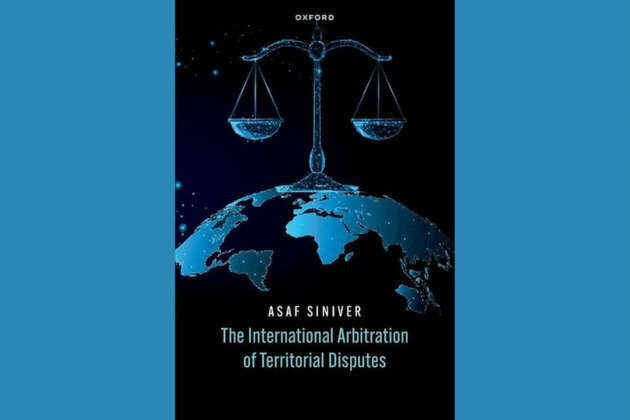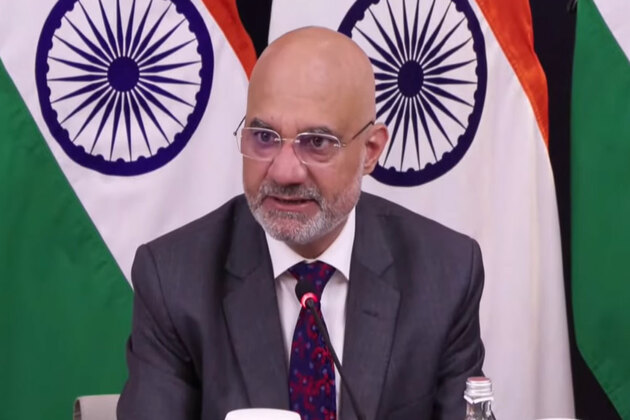Review The International Arbitration of Territorial Disputes
E-International Relations
07 Jul 2025, 13:48 GMT+10

Trinidad Cruz
Download PDF
Jul 7 2025
1
viewsImage by Oxford University PressThe International Arbitration of Territorial Disputes
By Asaf Siniver
Oxford University Press, 2024
In this new book, Asaf Siniver offers a unique perspective on international arbitration of territorial disputes from a political standpoint. He argues that arbitration has been underutilized in resolving border conflicts compared to third-party mediation, even though in many cases, arbitration appears to be the best available tool for states. To explore the reasons behind this phenomenon, the author invites the reader to view arbitration as a process, examining its antecedents, occurrence, and outcome. The goal of the study is to identify the context in which states turn to arbitration for resolving interstate territorial disputes and to understand why states choose to comply with, or defy, the arbitration award.
Sinivers analysis of arbitration is innovative from both international relations and international law perspectives. First, international relations studies have focused on the differences between third-party mediation and legal dispute resolution methods, often based on large quantitative research. Second, international law has generally studied arbitrations through their outcomes, offering legal analyses of the awards issued by arbitral tribunals. Sinivers book, however, provides a qualitative and comparative analysis centred solely on arbitration. Through a small sample of border arbitrations between states, he draws conclusions about the similarities and differences observed in the arbitrations processes.
The book begins by placing arbitration within the broader range of mechanisms that states can use to resolve disputes peacefully: direct negotiation, mediation, arbitration, and adjudication. Within this spectrum, arbitration is presented as occupying a twilight zone between binding and non-binding methods of dispute resolution. Siniver characterizes international arbitration as a hybrid method of dispute settlement that combines the most attractive attributes of third-party mediation (party autonomy) and adjudication (legally binding outcome) (p. 173). Arbitration, therefore, is akin to mediation due to the flexibility it grants parties to shape the process according to their needs and allowing the tribunal to rule based on equity, beyond strict legal considerations. At the same time, arbitration resembles adjudication because its outcome is legally binding for the parties. For the author, this dual nature of arbitration makes it particularly suitable for resolving territorial disputes, as it enables political conflicts to be solved through a legal mechanism based on equity, with a mandatory and final outcome.
According to Siniver, states often prefer other methods of dispute resolution over arbitration for territorial disputes, not due to flaws in the arbitration mechanism itself, but because of how states choose to apply it. For instance, states may limit arbitration in ways that undermine its key features, such as flexibility, party autonomy, and the tribunals capacity to issue decisions based on equity. This misapplication causes arbitration to lose its hybrid nature and resemble a purely legal mechanism. Consequently, Siniver concludes that the underutilization and shortcomings of arbitration are due to the specific design chosen by states for the cases to be arbitrated.
Siniver then tests his theoretical framework through four arbitrations that took place in different regions: the Rann of Kutch Arbitration between India and Pakistan; the Beagle Channel Arbitration between Chile and Argentina; the Taba Arbitration between Egypt and Israel; and the South China Sea Arbitration between the Philippines and China. For each case, the author examines the national and international political context in which the parties decided to use arbitration, how they selected the arbitration rules, and whether they chose to comply with the award. Interestingly, Siniver concludes that arbitration never occurs in a vacuum; rather, in each case, arbitration is part of a case management trajectory, in which different dispute resolution methods are alternated to resolve long-standing conflicts. Arbitration, in these cases, is used by states after previous failures to resolve outstanding disputes.
Another significant conclusion is the importance states place on appearing as actors who abide by the rules of public international law. Siniver demonstrates that even though in half of the studied cases, the losing party chose not to comply with the tribunals ruling, states were concerned about the reputational costs that their decision could case to their imagen in the international arena. In the studied cases, both Argentina and China justified their non-compliance using arguments rooted in public international law, even though, in practice, their decisions were based on domestic and foreign policy considerations.
On a less positive note, Siniver points out that in the four cases studied, the states have not chosen arbitration again to resolve other pending border disputes. However, this was not the case for Chile and Argentina, which submitted the Laguna del Desierto dispute to arbitration in 1994. Siniver also concludes that, in general, there is a lack of political will to use arbitration to resolve territorial conflicts of greater geopolitical significance. For example, India and Pakistan have not used arbitration to resolve the Kashmir conflict, and arbitration has not been used to settle other aspects of the Arab-Israeli conflict. Similarly, in the South China Sea case, which involved significant economic interests for the parties and was the only case studied in which a global power was involved, China chose not to comply with the award, despite efforts to manage the reputational costs associated with its decision.
Contrary to Sinivers thesis, the case studies suggest that in disputes involving broader geopolitical interests, states tend to be more reluctant to resort to arbitration due to its inherent characteristics. Arbitration is, by nature, a zero-sum process necessarily producing a winner and a loser. Moreover, it requires the selection of a tribunal and the drafting of a compromis, both of which can become points of contention and provide grounds for challenging the impartiality of the award. Consequently, governments may be unwilling to bear the domestic political costs of losing a dispute that arouses public sentiment or has long-term economic or security implications.
Perhaps it is precisely these intrinsic features of arbitration that drive states to opt instead for adjudication by permanent courts. What political advantages does a standing tribunalwith permanent judgesoffer over arbitration, where parties select their arbitrators?
While Sinivers study succeeds in contrasting and capturing the comparative advantages of arbitration over mediation under certain political conditions, it falls short by not addressing the differences between arbitration and adjudication. Adjudication has its own benefits. For instance, in territorial disputes between states, the deciding body is typically a permanent court whose members are not appointed ad hoc for a specific case, thereby strengthening perceptions of impartiality and institutional credibility.
Ultimately, the decision to submit a dispute to a particular dispute resolution mechanism is a political one. It would be valuable to explore the conditions under which adjudication is politically preferred over arbitrationideally through a quantitative study comparing how often states choose adjudication versus arbitration. This could be complemented by a process-oriented analysis of selected adjudication cases. Such an approach would deepen our understanding of when arbitration, given its hybrid nature, becomes the most politically appropriate method for resolving territorial disputes.
It is also important to consider that states are often unable to choose adjudication to solve their territorial disputes, as international courts lack jurisdiction per se and require states to grant it either for a specific case or through treaty commitments. For this reason, Sinivers study would also benefit from an analysis of instances where arbitration was chosen because no other adversarial dispute resolution mechanism was available.
Finally, Sinivers book successfully finds the intersection between international relations and international law in the resolution of border disputes. Through clear and systematic examinations of four case studies, the author demonstrates that the two fields are not mutually exclusive but complementary, and that one cannot be fully understood without the other. While international arbitration itself is a legal process in which the parties involved advance arguments based on public international law, the ultimate decision is driven by political factors, both in choosing arbitration to settle a border dispute and in deciding whether to comply or not with the tribunals award.
Further Reading on E-International Relations
- Call for Contributors Asian Territorial and Maritime Disputes: A Critical Introduction
- Review Saving the International Justice Regime
- Review Debating Humanitarian Intervention: Should We Try to Save Strangers?
- Review Social Closure and International Society
- Review The Justification of War and International Order
- Review James Ker-Lindsays YouTube Channel
About The Author(s)
Trinidad Cruz is a Chilean-qualified lawyer with extensive experience in international dispute resolution. She holds an LL.M. from Columbia Law School (2024), where she served as a Research Assistant to Professors Sarah Cleveland, George Bermann, and Kabir Duggal. She previously earned her law degree magna cum laude from Pontificia Universidad Catlica de Chile. Trinidad has represented the Republic of Chile in high-stakes public international law cases, including theDispute over the Status and Use of the Waters of the Silala(Chile v. Bolivia) before the International Court of Justice and in two investor-state arbitrations under investment treaties. She also has significant private-sector experience, having worked on domestic arbitrations and transactional matters in the infrastructure and real estate sectors.
Editorial Credit(s)Felipe Crowhurst
TagsArbitrationDispute ResolutionInternational LawSovereigntyTerritory
 Share
Share
 Tweet
Tweet
 Share
Share
 Flip
Flip
 Email
Email
Watch latest videos
Subscribe and Follow
Get a daily dose of Chile Sun news through our daily email, its complimentary and keeps you fully up to date with world and business news as well.
News RELEASES
Publish news of your business, community or sports group, personnel appointments, major event and more by submitting a news release to Chile Sun.
More InformationSouth America
SectionWorld Insights: Brazil, "Land of the Future"
In its ascent to modernization and a sustainable future, Brazil, alongside many other developing countries, has confronted challenges...
"Leave me out of it": Mahershala Ali jokes about Marvel's 'Blade Reboot' delay
Washington, DC [US], July 7 (ANI): The discussions and delays surrounding Marvel's 'Blade Reboot' have not only annoyed its fans but...
EAM Jaishankar reaffirms India's commitment to developing privileged strategic partnership with Russia's FM
Rio de Janeiro [Brazil], July 7 (ANI): Russia's Foreign Minister Sergey Lavrov held talks with External Affairs Minister S Jaishankar...
From waste to watts, China's incineration plants lead the way
by Xinhua Writer Jiang Tingting BEIJING, July 7 (Xinhua) -- In a waste incineration plant in Xinxiang, central China's Henan Province,...
'India will sign four MoUs with Brazil,' Indian Envoy to Brazil says
Rio de Janeiro [Brazil], July 7 (ANI): Indian Ambassador to Brazil Dinesh Bhatia on Sunday (local time) said that Prime Minister Narendra...
BJP's CR Kesavan praises PM Modi's BRICS speech for strong stand on terrorism, push for global south representation
Chennai (Tamil Nadu) [India], July 7 (ANI): BJP leader CR Kesavan on Monday praised Prime Minister Narendra Modi's address at the BRICS...
World
SectionUS debt limit raised, but spending bill fuels fiscal concerns
NEW YORK CITY, New York: With just weeks to spare before a potential government default, U.S. lawmakers passed a sweeping tax and spending...
NATO state issues warning over ramping up defense spending
Western nations risk financial unsustainability when implementing their militarization plans, the Danish economy minister says EU...
'India will sign four MoUs with Brazil,' Indian Envoy to Brazil says
Rio de Janeiro [Brazil], July 7 (ANI): Indian Ambassador to Brazil Dinesh Bhatia on Sunday (local time) said that Prime Minister Narendra...
U.S.-WASHINGTON, D.C.-TRUMP-TEXAS FLOODS
(250707) -- WASHINGTON, July 7, 2025 (Xinhua) -- U.S. President Donald Trump returns to the White House in Washington, D.C., the United...
TSMC denies media reports on US expansion impacting global projects
Taipei [Taiwan], July 7 (ANI): The world's largest contract chipmaker, Taiwan Semiconductor Manufacturing Company (TSMC), stated that...
Nifty, Sensex open flat; experts note tariff deadline may be extended till August
Mumbai (Maharashtra) [India], July 7 (ANI): Indian stock markets opened flat on Monday as investors stayed cautious ahead of the US...












